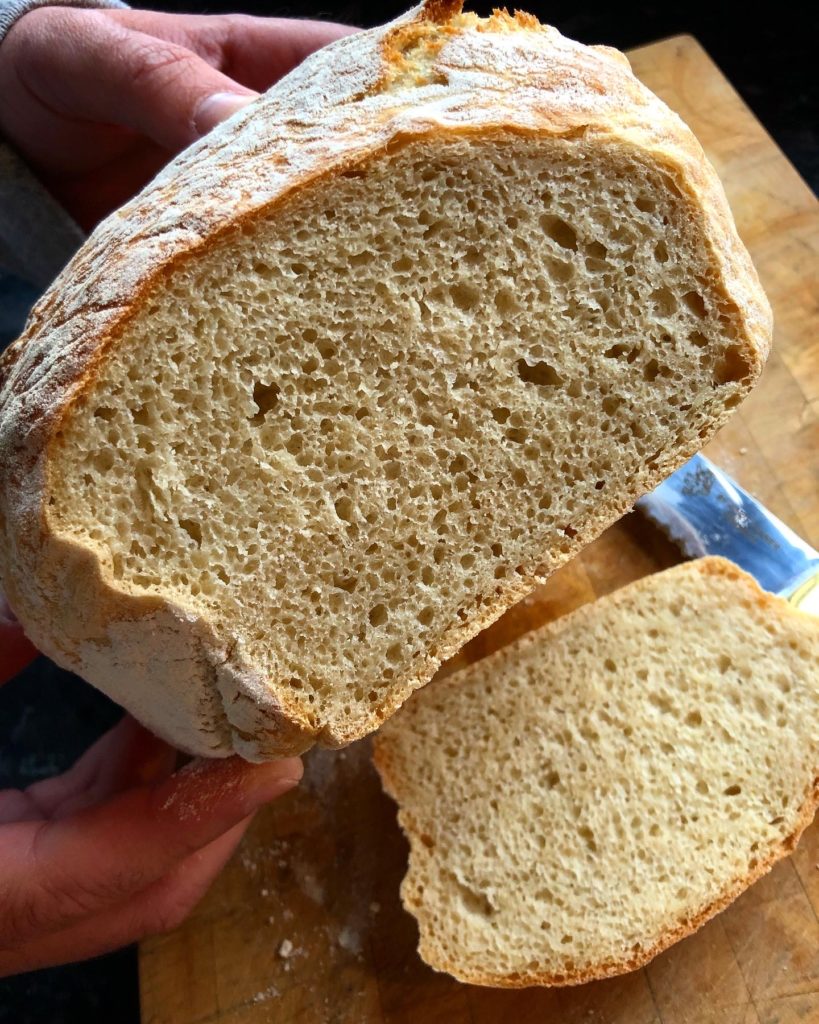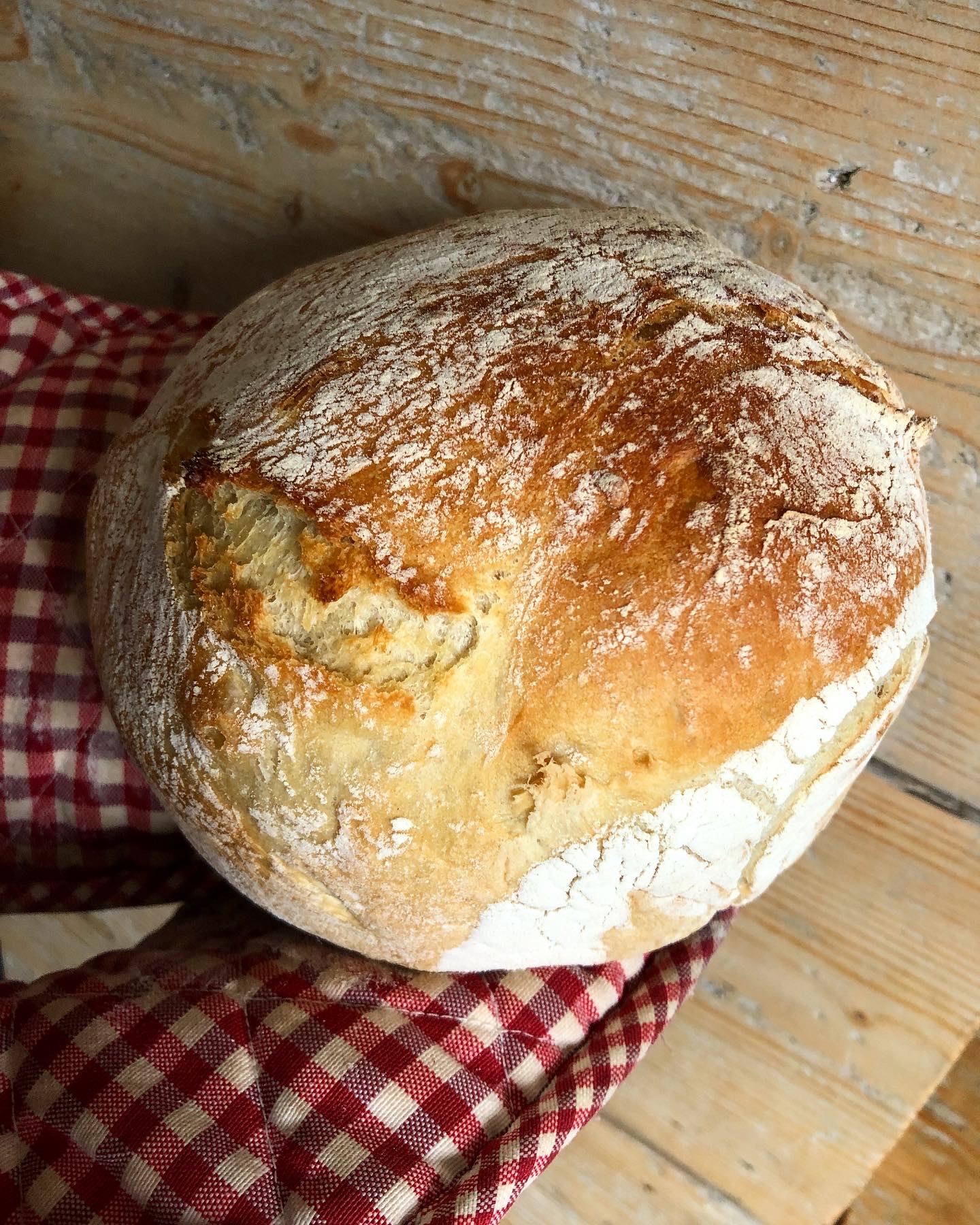Mr Flavour and I have uncovered the holy grail of bread making: No Knead Bread. 4 ingredients, less time and cost resulting in a light and seriously tasty loaf that won’t test your fortitude as a normal rational human being.
This article appeared in the May 2020 edition of The Opinion Magazine. It also included mine and Mr Flavour’s tried and tested recipes for Irish Soda Bread and Banana Bread.
A few short years ago, my husband and I jumped on the Sourdough bandwagon. It was a journey of epic proportions: epic costs of classes (although they were immense fun), epic time spent keeping The Starter alive, books, equipment and enough flour to almost justify investing in my own mill.
When I think back to how much flour we threw away between feeding the starter and lovingly kneaded loaves of bread that turned out flat and uninspiring; or the three occasions we killed the flipping starter stone cold dead and had to start again, I feel glad we abandoned “the journey” long before Covid-19 came along and made the whole idea of wasting so much time, patience, money and flour inconceivable!
However, my Instagram feed is still full of bready creations from people restarting their sourdough adventures or trying it out for the first time, and while many are still embroiled in the saga that is making bread with a sourdough starter, my husband and I uncovered the holy grail of bread making: No Knead Bread – four ingredients, less time and cost resulting in a light and seriously tasty loaf that won’t test your fortitude as a normal rational human being.

So easy in fact, that No Knead Bread is a perfect project for the at-home baker desperately seeking new distractions, and parents panicking for something else to do with their little angels before the very last nerve has been completely and utterly frayed.

This mixture will make a medium loaf. Double the quantities for a larger loaf.
Ingredients
- 350 g strong bread flour
- 1 ½ cups tepid water
- 7 g packet of dried yeast or 1 1/2 tsp of fresh yeast
- 7 g of salt
Method
- Mix water, salt and yeast in a mixing bowl, then add flour. Mix with a spoon until combined.
- Loosely cover and leave for a minimum of two hours.
- Tip out the dough onto a floured surface and fold the four ‘edges’ into the middle.
- Clean the mixing bowl, dry thoroughly and dust with some more flour. Put the bread mixture back in the bowl, cover and leave for a minimum 30 minutes or up to 2 hours for the second prove – the longer the better.
- Heat the oven to 220 degrees Celsius, fan, and place a deep casserole dish with a lid into the oven to heat.
- Tip the bread mixture out onto a lightly floured surface. The mixture will feel wetter and stickier than you might expect, but this is good because a dough with higher moisture will give more rise and bubbles in the finished loaf.
- Just bring the dough together enough that you can pick it up and place it into the searing hot casserole dish, cover with the lid and cook for 15 minutes and a further 20 minutes with the lid off to allow the bread to finish rising, crisp and colour.
- Tip the bread out of the dish and tap the bottom, if it sounds hollow it’s done.
- Allow to cool for 30 minutes before cutting.

